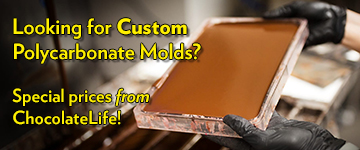Hi Paul,
I have just posted that I think that part of the problem may be over filling too. I very much apprecviate your confirmation of the shellac back-to-back possibility too. I changed both of those variables (filling & shellac residue) and have a far improved result.
I don't use a shellac powder - I use a liquid (Capol 425M). I didn't know there was a powder and I'll keep that in mind. If you don't use shellac how do you seal the surfaces?
The chocolate is 62%. I use Sicao (sometime Barry Callebaut) 70% and also 55% and combine them to get it "just right" for the balance for coffee beans, which is what I mostly do. For simplicity I tend to stay with the same mix for all dark chcolare work. I had wondered if the mixture was a problem too but for now it remains a "possibility" to ponder next time.
You mention your environment. I have been over your various pictures and saved them for inspiration as I need to re-do my room. You have a very similar set-up to me as far as I can see but your wall surfaces and some of your equipment is better. Your pan seems about the same as mine - a bit smaller I think. You look really well organized! You have two pans?
In one of the pics you have two pipes leading into your pan - one will be cold air. What is the other one please (the flexible pipe).
Thanks again!
Colin


